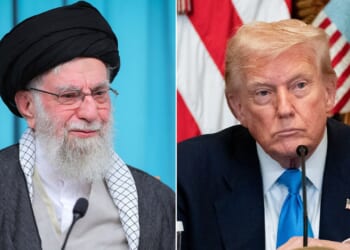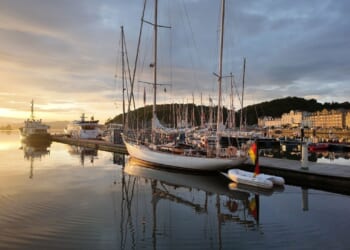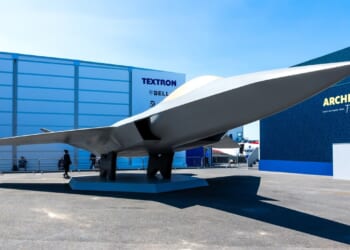As part of the exercise, the HMS Prince of Wales also received supplies and fuel while underway from Royal Navy and US Navy support ships.
The US military and its allies are putting on an impressive show of force on China’s doorstep—deploying three significant aircraft carriers to the region, as well as several accompanying warships.
America, Britain, and Japan Are Training Their Navies Together
As part of the United Kingdom-led “Operation Highmast,” the HMS Prince of Wales, USS George Washington, and JS Kaga aircraft carriers are drilling together in the Northern Philippine Sea, bringing together scores of fighter jets and dozens of other warships.
In addition to the three aircraft carriers, the US Navy deployed a Wasp-class amphibious assault ship that can also carry fighter jets. The Pentagon has been exploring the concept of a “Lightning Carrier” that combines amphibious assault ships with specialized fighter jets as a way to increase its carrier capabilities in the event of a conflict with China.
Carrier operations are some of the most complex maneuvers a military force can engage in. Essentially floating air bases, aircraft carriers pack significant destructive capability that can deploy anywhere in the world.
Bringing together three aircraft carriers from three different nations and having them work closely is no simple feat. It requires stellar interoperability among all participants. This is one major driver behind large-scale naval drills like Operation Highmast.
“Op Highmast includes partner nations outside NATO with shared security interests, enhancing global stability and security,” the Royal Air Force stated about Operation Highmast and the opportunities it brings. “These nations’ diverse perspectives and capabilities enrich the exercise, highlighting the importance of strong international relationships. As global security challenges grow, a united response is essential.”
The 809 Naval Air Squadron aboard the HMS Prince of Wales flies the F-35B Lightning II stealth fighter jet, and is manned by both Royal Air Force and Royal Navy personnel. The “B” variant of the stealth fighter jet has Short Take-off, Vertical Landing (STOVL) capabilities and can land and take off like a helicopter but fly like a fighter aircraft.
The HMS Prince of Wales Is Traveling Around the World
The HMS Prince of Wales has embarked on a months-long global deployment with the goal of projecting force and testing the deployment capabilities of its carrier strike groups and fifth-generation stealth fighter jets.
As part of the exercise, the British aircraft carrier also received supplies and fuel while underway from Royal Navy and US Navy support ships. During the replenishment at sea, the Royal Fleet Auxiliary tanker RFA Tidespring pumped fuel to the HMS Prince of Wales, which is diesel-powered rather than nuclear-powered as all US aircraft carriers are. The USNS Wally Schirra logistics ship transferred food, spare parts, and ammunition.
At the same time the US Navy and its allies are drilling together in the Northern Philippine Sea, the Chinese Navy suffered an embarrassing accident after one of its warships collided with a Chinese Coast Guard vessel. Though neither ship sank, the Chinese Coast Guard ship suffered significant damage, and photos circulated showing a good portion of its bow missing following the collision with the warship.
The Chinese military has been very active in the Indo-Pacific, attempting to assert its power through aggressive deployments of the People’s Liberation Army Navy, the Chinese coast guard, and even Chinese-flagged commercial fishing vessels.
About the Author: Stavros Atlamazoglou
Stavros Atlamazoglou is a seasoned defense journalist specializing in special operations and a Hellenic Army veteran (national service with the 575th Marine Battalion and Army HQ). He holds a BA from the Johns Hopkins University and an MA from the Johns Hopkins’ School of Advanced International Studies (SAIS). His work has been featured in Business Insider, Sandboxx, and SOFREP.
Image: Shutterstock / viper-zero.















